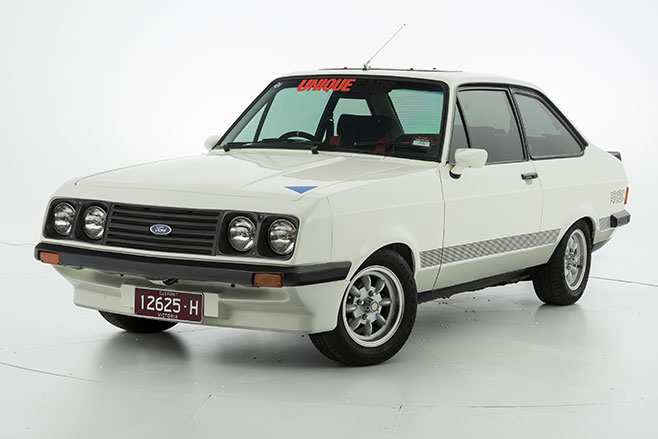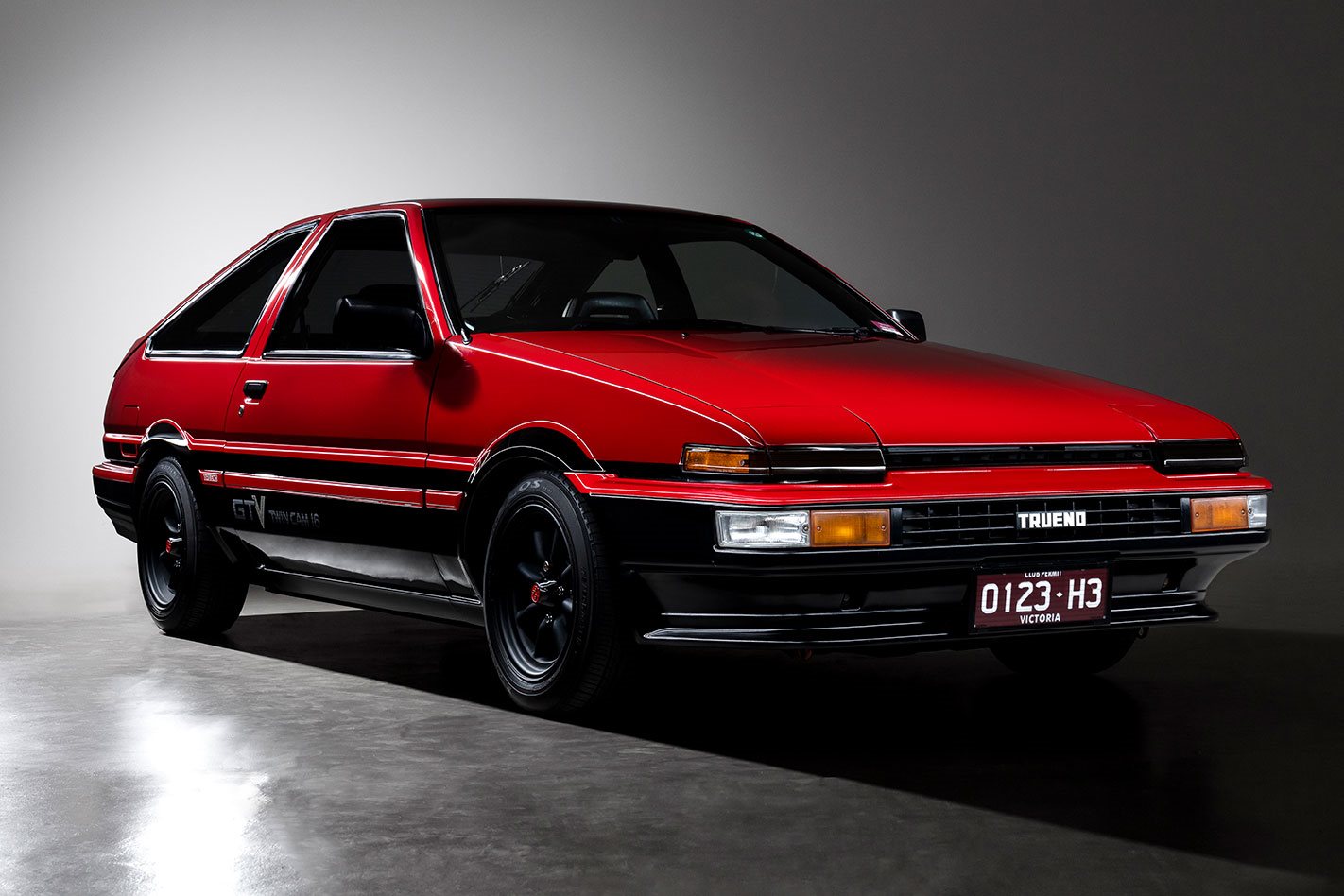Rear-drive layout, light weight, revvy twin-cam inline-4 and near 50/50 weight distribution from the factory: it’s no real surprise Toyota’s AE86 Sprinter came to be adored by any and all who loved driving. Drifters in Japan, rally nutters in Finland and circuit racers around the world all employed to good effect the AE86. The adoration even extended to comic book fans, the little Toyota’s giant-killing reputation a central theme of the hugely popular Japanese manga Initial D.
The small and compact AE86 slayed plenty of real giants on the world motorsport stage, too. From 1985 it dominated the under-2.0-litre class of the Australian Touring Car Championship with a best finish of ninth outright at the 1985 Sandown 500 (with John Faulkner and Ray Cutchie). Overseas, between 1985 and 1986 Toyota AE86s claimed class victories and titles in major touring car championships – and national gravel rallies – from Europe, to Japan and the UK.
In Japan, “Hachi Roku”, as it was nicknamed (Japanese for “eight six”), were cheap and plentiful, and helped catapult drifting from an oddball pursuit to the world stage.

As a road car, the AE86 demonstrates the enjoyable rear-drive balance that has made it so popular with rally drivers and drifters, even if the engine is a bit dull in stock form. AE86s are best bought via the auction houses in Japan, although with many crashed or rusted into oblivion, good, clean examples are becoming rarer – and so prices are starting to skyrocket, $25K to $30K now becoming the norm to buy one and get it to Australia. And that’s before putting it on the road.
The AE86 came as a three-door hatchback or two-door coupe, as a fixed headlight version (the Levin) or one with pop-ups (the Trueno). While the cheapest ticket to AE86 ownership is an Australian-delivered version, unless you plan on substituting the grandpa-spec carburettor SOHC 1.6-litre, best aim for a Japan-only model. The more ‘driver-focused’ GTV had quicker steering and a sportier suspension tune but the more common, higher-grade GT-Apex is probably the pick with a nicer interior and more features.

Toyota AE86 body and chassis
Check everywhere for rust, including less-obvious areas like under the spare wheel in the boot and the rear three-quarter pockets. Look for signs of poor repair. A paint thickness gauge may be handy. External door handles fail with age and can be hard to replace. Doors sag. Check under the sills for damage from the car being hoisted incorrectly. If it’s an import you can check auction and registration records online.
Toyota AE86 engine and transmission
The stock 4AGE was a 1.6-litre injected inline-4 that utilised a twin-cam, 16-valve head co-developed with Yamaha, able to rev to 7700rpm straight from the factory. It’s a very tough engine able to rack up three or four hundred thousand kilometres if looked after, but not without obviously slowly wearing out. Check for oil leaks as seals perish; and exhaust smoke.

A compression test is not a bad idea. If the engine needs a rebuild, parts are relatively cheap and easy to get. Third- and second-gear synchros often wear out in the five-speed manual (don’t bother with any autos). Try to find a car with a factory fitted limited slip diff.
Toyota AE86 suspension and brakes
Check bushings, tie-rod ends, ball joints, wheel bearings, etc. All wear out, but are easily replaced. The AE86 uses MacPherson struts up front and a four-link live rear axle with coil springs. Stock springs and dampers were on the softer side but almost every AE86 has at least stiffer/lower aftermarket springs. JDM models used a four-disc brake set-up. Owing to the modest power and light weight, the four discs are barely taxed on stock AE86s but still check pad and disc wear. Calipers can seize from under-use.
Toyota AE86 interior and electrics
The interior was on the economy side even when new and is far from the last word on hardiness. If you find a car with a good interior, it’s a good sign. Dashboard cracks are common and the stock seats get clapped out easily.

The clock surround often cracks but is easily replaced. Every car has faded interior door handles. Good condition AE86 parcel shelves look great in any investment portfolio.
Toyota AE86 modifications
Tuning is important to bring out the motorsport DNA of the AE86 and even today it remains very well supported with new products from the aftermarket. You’ll want to install coil-overs (look no further than Aussie outfit Shockworks) and aftermarket wheels – 14s for ‘period correctness’, 15s for better tyre selection.
Extra power is no unwelcome thing in an AE86, with 110kW from the 4AGE within relatively easy reach via intake, exhaust and cam. Up to 150kW is possible from the 16-valve but you’re talking 9000rpm and a lot of time and money.
Engine swaps are common and every engine imaginable has at some point gone in an AE86 – LSs, rotaries, the Honda S2000’s F20C – but you should most aspire to the “BEAMS” 2.0-litre 3SGE inline-4 from the Japan-only 2002 Toyota Altezza RS200, making 147kW. In a 950kg car, 150kW is besting a Porsche 981 Cayman for power-to-weight. You’ll probably want bigger brakes by that point. And a roll-cage.

Toyota AE86 Sprinter specs
Body 3-door, 5-seat hatchback Engine 1587cc inline-4, DOHC, 16v Power 96kW @ 6600rpm Torque 149Nm @ 5200rpm Transmission 5-speed manual Weight 940kg Used range $10,000-$50,000
Toyota AE86 alternatives
1.Toyota MR2 (AW11)
Not too keen on blowing $30K on an AE86? Get an AW11. Same 1980s style, if slightly less-friendly mid-engine handling. Lighter 4AGE (Australian-delivered) the sweeter pick but imported supercharged 4AGZE has lovely torque.

2. Ford Escort RS2000 (Mk2)
Buy the car that possibly inspired Toyota to make the 4AGE-powered AE86. Rarer, more expensive, but same light weight rear-drive feeling and atmo 2.0-litre inline-4 performance. Made 70kW/149Nm; weighed about 1000kg. Comes alive with tuning.

3. Mazda MX-5 (NA)
Sportier silhouette, similar performance and feel behind the wheel and with top-down appeal. A lot cheaper than an AE86 (and not going down in value either) leaving plenty of money to spice up engine, suspension and wheels/tyres.






